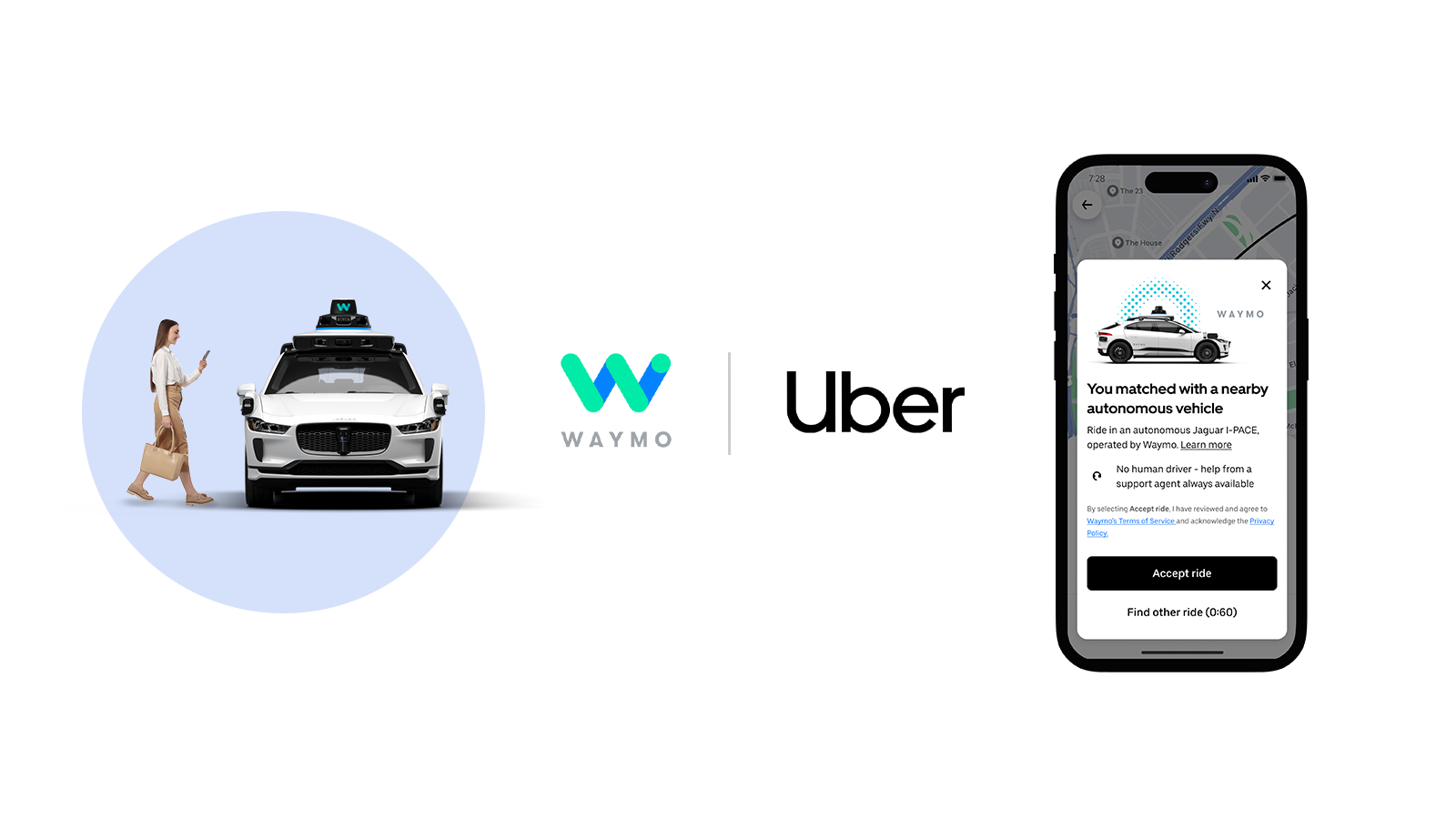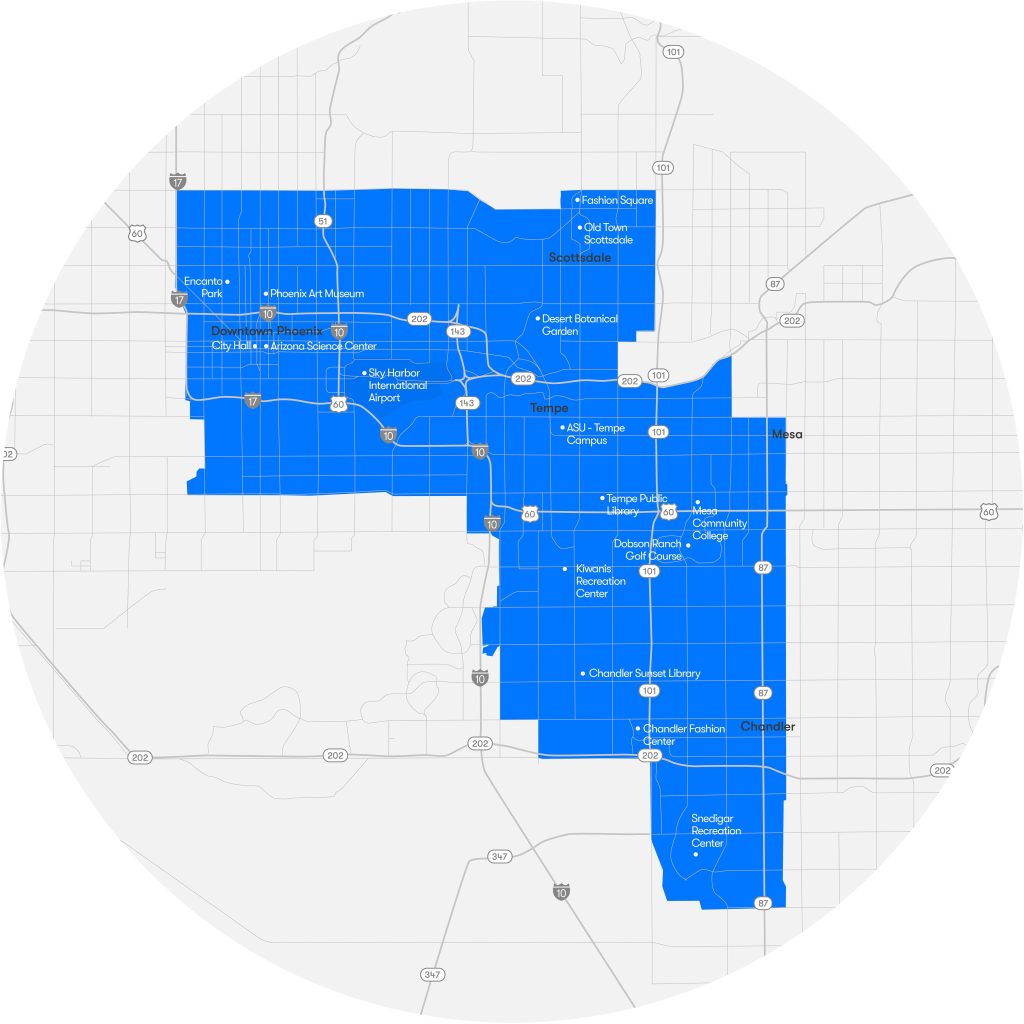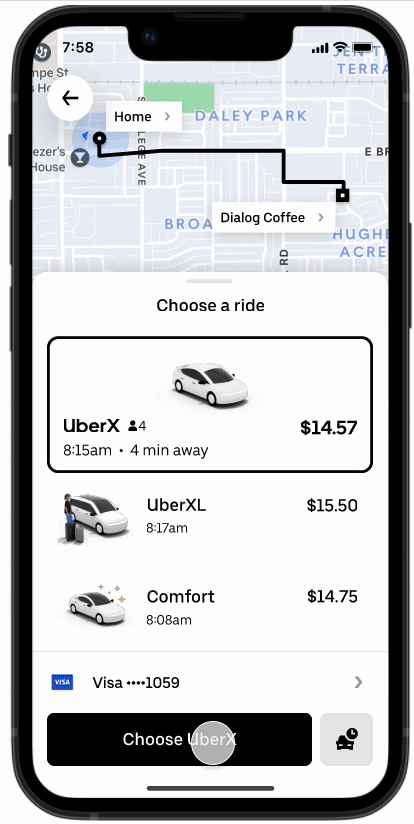
Waymo and Uber have rolled out a partnership in Phoenix wherein riders who order an Uber within Waymo’s service area might get picked up by a driverless Waymo vehicle, rather than a human-driven Uber car, starting today.
Waymo, Google’s driverless taxi arm, has been gradually rolling out its service to more members of the public and more locations recently. We rode it in Los Angeles earlier this month, where it is currently “touring” around the city and operating on a trial basis.
But its Phoenix service area is much larger – a total of 225 square miles – and has been running since 2017, in some capacity or another. In Phoenix, Waymo even services the Phoenix Sky Harbor airport for pickups and dropoffs.
So its service in Phoenix is more developed than elsewhere, to the point where Waymo and Uber now find themselves comfortable enough to offer driverless taxis to any random rider who requests an Uber pickup.
But if you order a human, you won’t be surprised to have an empty car pick you up. First, your pickup and dropoff points both have to be in Waymo’s service area, of course.

The area generally covers the area between downtown Phoenix, Tempe, Scottsdale, Mesa, and Chandler, including the aforementioned Phoenix Sky Harbor airport.
So, you order a car, with whatever pricing Uber has decided on for the time being (which suggests pricing will be identical between human and driverless taxis). Then, if the system finds a Waymo car that is convenient for your pickup, the app will give you a notification saying that a Waymo has been chosen for you, which you have the option to accept or decline. This is what the whole process looks like:

After accepting the driverless ride, the flow goes somewhat similar to how Waymo’s first-party Waymo One app works – the car decides where the best place to pick you up is, and may ask you to walk a short distance to that pickup point (it tries to avoid places that are busy and confusing – you can read more about that in our detailed log of our ride in LA). Then you need to unlock the car from within the Uber app when it arrives, hop in, and you’re off.
The system requires no additional registration with Waymo One, doesn’t require having that app on your phone, and doesn’t require any special settings within Uber’s app. If you want to be picked up by a Waymo, you can go into the “ride preferences” section of your Uber app and check a setting that will increase your chances.
Electrek’s Take
There are a lot of interesting notes to be had about this news.
Uber previously had a self-driving technology arm operating both in California and Arizona, but that arm was sold off in 2020 after a lot of setbacks. One of those setbacks included a lawsuit between Waymo and Uber over trade secrets (for which some legal action is still ongoing), so this partnership between the two companies, first announced in May and bearing fruit today, is curious given that context.
It’s also interesting that these Ubers look like they will be the same price whether you get a driver or not… at least for now?
One of the potential benefits of self-driving taxis is that they can save on labor costs, both making it cheaper and easier to get around and freeing up man-hours to increase productivity elsewhere in society.
With self-driving tech in its infancy, sensors and systems to run them are expensive, so we may not be there yet. But this also raises the specter of the possibility that as humans are made redundant, the pay that used to go to these humans will instead go to the owners of robots.
This runs the risk of concentrating wealth into the hands of few capital owners who own the driving robots, rather than the laborers who used to make money from driving, which is not a good thing for society. “Driver” is, after all, one of the most common job titles in the US, so while the potential societal gains are high from automation here, those gains need to be distributed properly or else there are going to be a lot of angry people with nothing to do.
We’re seeing the same conversation had throughout many industries with the advent of AI, and societally we really aren’t ready for this. Some of the more forward-thinking members of the tech industry have called for a “basic income” as a result, though others question if this is just a cynical ploy to undermine the current welfare state of targeted assistance to the needy.
Either way, this is something that we needed to talk about yesterday, and nobody’s having an adult conversation about it, and that’s a problem.
Instead, the conversation has focused on oft-sensationalized rhetoric about the safety of autonomous vehicles. Just this week, Cruise’s license to operate in California was revoked as a result of an accident earlier this month where the Cruise car was not initially at fault, but responded poorly in the post-accident scenario, and Cruise misrepresented facts to the DMV in attempting to cover-up the poor decisionmaking of its vehicle.
The reason for that cover-up is probably because Cruise wanted to avoid the societal flack it knew it would get. And that flack spills over to other AVs, Waymo included, which is unfortunate since Waymo does seem to have a better safety/reliability/responsibility record than Cruise – so far.
In short, there are a lot of difficult conversations to have here as a society related to the advent of AI, and how it can benefit everyone, but they really aren’t served by sensationalism. And the longer we put off having those conversations, the more technology is going to keep progressing, whether we want it to or not (and we should – we should just want it to happen responsibly for all of society).
FTC: We use income earning auto affiliate links. More.



Comments